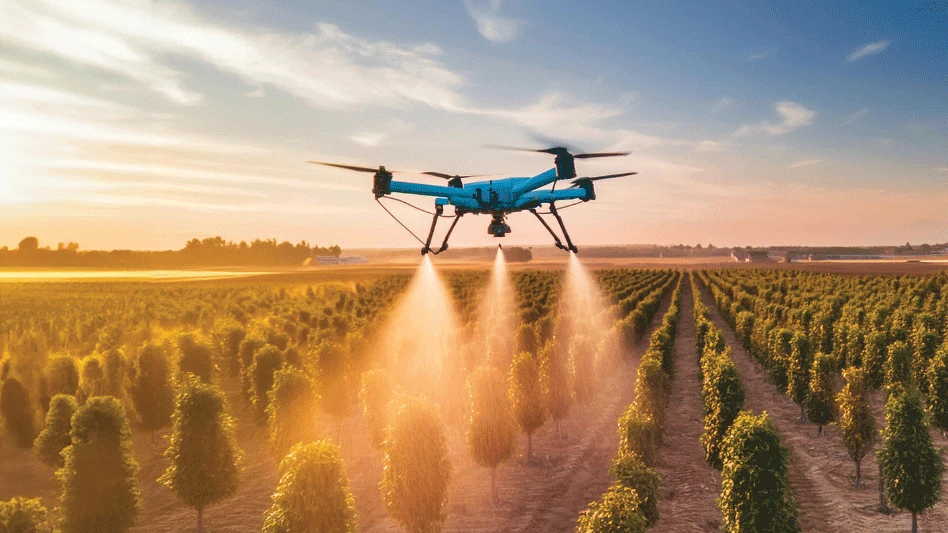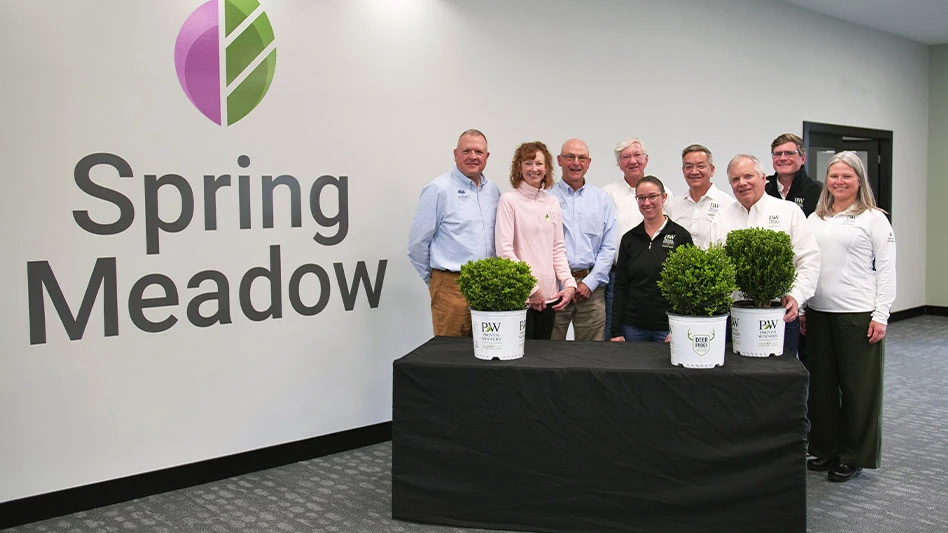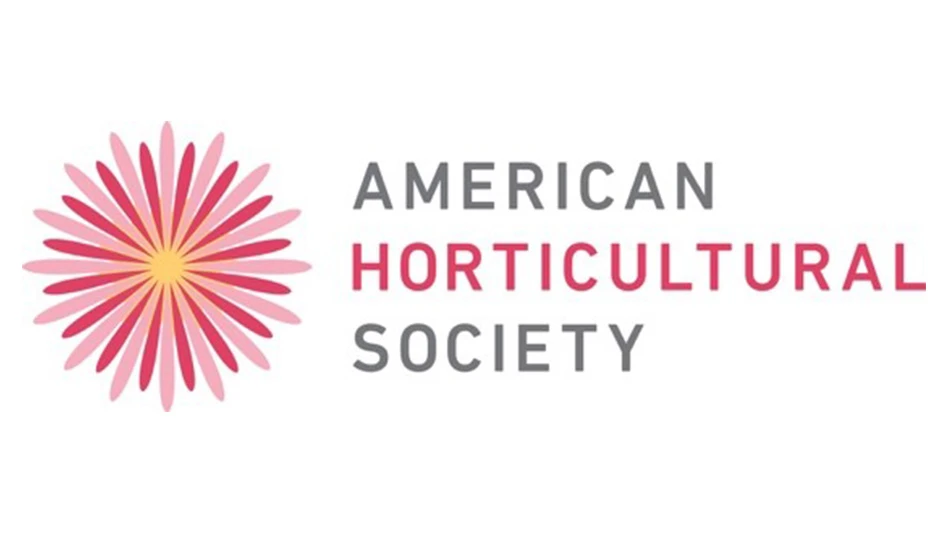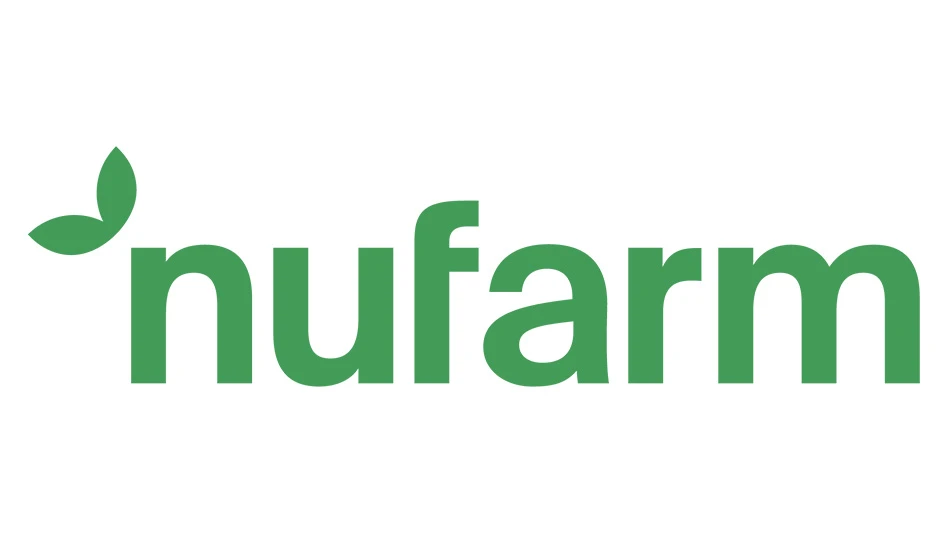
Generated by Adobe Firefly
Drones have been hovering over the domestic agriculture sector for years in the areas of crop health and field-condition data collection. While drone-based chemical application is currently in its infancy in the U.S., industry onlookers predict a high-flying future for these small, remotely piloted aircraft.
“Many growers already recognize the advantages of drone aerial application systems, but they also realize that, as an early adopter, not all of the issues (around drones) have been resolved,” says James Robbins, a retired horticulture professor and extension specialist with the division of agriculture at University of Arkansas.
Robbins and South Carolina State University senior researcher Joe Mari Maja are long-time ag drone proponents. The duo, who spent years measuring the accuracy and efficiency of drone systems for plant nurseries and the larger marketplace, say farmers still need time to acclimate to the emerging innovation.
Wider acceptance of spray drones is currently stifled by regulations that require not only a pilot certification from the Federal Aviation Administration (FAA), but special authorization for the aerial use of agricultural chemicals as well.
Nor can the slow bureaucracy of the FAA keep up with the explosive interest in unmanned aircraft usage across the sector. At the same time, there are still farmers reluctant to replace their traditional ground spraying equipment, says Robbins.
“These older systems have been around, so there’s a paradox shift with drones because we’ve never had that option before,” Robbins says. “Then you say, ‘Wow, this is a totally different perspective on how to apply chemicals more precisely.’”
Many smaller nurseries use a pull-behind tank with a hand-operated sprayer for their chemical application needs. Larger producers, meanwhile, employ air-blast cannons or specialized boom sprayers that can distribute substances over large fields. However, drones provide several advantages compared to ground-centric systems, says Maja.
Manufacturers like Chinese drone producer DJI are developing lightweight aircraft specifically for agriculture. The DJI Agras T40, for example, is equipped with a 40-liter tank, eight propellers and two spray nozzles. The vehicle’s naturally low-altitude ensures that chemicals cover a plant safely and effectively, thanks to propellers that push material deep into the canopy.
“A drone is also more accurate due to the navigation software that keeps the application within the target area,” Maja says. “Experience from applying mosquito control chemicals has demonstrated small spray drones’ unique maneuverability for treating hard-to-reach areas.”

A happy early adopter
Centerton Nursery purchased a DJI Agras T40 last year to cover its 2.4 million square feet of open planting and greenhouse space – acreage primarily used for production of shrubs and perennials.
The family-owned business had been tracking drone technology for years, following the trends as crop dusting and helicopter dispersal fell out of favor. In recent decades, Centerton utilized hand sprayers along with fuel-guzzling blasters that could take half a day to cover a field, says co-owner Robert Blew.
The business upgraded its spraying process after Blew’s brother, Donald, watched a video of a drone navigating an orchard.
“It was flying between some trees, and my brother said that’s like flying between our greenhouses,” Blew says. “It was a matter of the technology getting good enough where it could spray at the rates we needed.”
Centerton obtained its drone from Maryland-based Accurate Ag, a $40,000 buy-in that included “soup-to-nuts” training and inroads into FAA registration, says Blew. Early returns have been positive, although current regulations against certain aerial applications limit the type of chemicals the company can use.
To that end, Centerton drone-sprays its field with biologicals – a preventative measure that would take twice as long with ground equipment. Trained employees program the drone’s route, while a previously scanned 3D map of the acreage ensures the aircraft avoids obstacles and stays within field boundaries.
“We got certified to fly at night, too,” Blew says. “There are some parts of the year where we’re working 18-to-20-hour days, so we can go in (with the drone) and get stuff done in the middle of the night without having to keep employees out of certain areas.”

Patience is a virtue
Countries including Japan and South Korea are ahead of the U.S. when it comes to agricultural drone use. Yet, agriculture could eventually account for 80% of the global commercial market, according to the Association for Uncrewed Vehicle Systems International, a nonprofit trade group.
Adoption will spread as more growers glean the benefits of drone spraying, notes Robbins, the retired horticulture professor. Unlike traditional sprayers, drones allow farmers to treat a crop in wet conditions. The vehicles are also better suited to handle small fields and hilly terrain, while utilizing less fuel than ground sprayers or airplanes.
“The realization that terrain is not always flat caused manufacturers to include terrain tracking and object avoidance sensors,” Robbins says. “The greatest improvement over the past decade has been the navigation software, which makes flying safer and more efficient. Drone manufacturers deserve tremendous credit for advancing the technology rapidly in a short period of time.”
Although spray drones’ short life cycle in agriculture has resulted in limited outcome data, Robbins forecasts reduced equipment outlay for nurseries that take the plunge. Decreased chemical exposure, more directed applications and reusable navigation routes are additional advantages of the burgeoning innovation, he adds.
Drone workshops and registration help can be found through informal groups like Remotely Piloted Aerial Application Systems (RPAAS). Growers in states with fire ants can ease into the space by harnessing the aircrafts’ low payload density, says Robbins.
“It’s low-hanging fruit, because the application pattern (of bait) is in lanes that are easily programmed,” he says. “As an early adopter of this emerging technology, you should educate yourself and proceed cautiously. Instead of purchasing the equipment and going through the many hoops of getting legal, your best decision is to hire a drone application service.”
New Jersey nursery owner Blew similarly recommends patience for growers making their first foray into drones.
“The technology is coming around quickly, but it may not be for everybody yet,” Blew says. “Look at chemicals, look at rates and talk to (drone) distributors that know way more than anyone in our industry.”

Explore the July 2024 Issue
Check out more from this issue and find your next story to read.
Latest from Nursery Management
- The HC Companies, Classic Home & Garden merge as Growscape
- Terra Nova releases new echinacea variety, 'Fringe Festival'
- Eason Horticultural Resources will now officially be known as EHR
- BioWorks receives EPA approval for new biological insecticide for thrips, aphids, whiteflies
- Ellen Mackenbach-Lakeman appointed new CEO of Dümmen Orange
- The Growth Industry Episode 3: Across the Pond with Neville Stein
- Southern Garden Tour sets 2025 dates for trial garden open houses
- New book explores plants that thrive in Rocky Mountains




